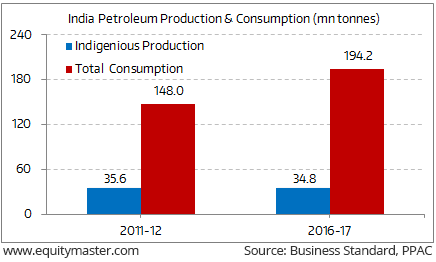Sensex & Nifty Open Higher; Cipla Gains On Strong Q1 Result
Majority of Asian stock indices are higher today as Chinese and Hong Kong shares show gains. The Shanghai Composite is up 0.34% while the Hang Seng is up 1.08%. However, the Nikkei 225 is trading lower by 0.84%. The three major US stocks indices ended higher on Friday, snapping three days of losses, as investors bet on slower US rate hikes.
Back home, share markets in India have opened the day on a firm note. The BSE Sensex is trading higher by 154 points while the NSE Nifty is trading higher by 49 points. The BSE Mid Cap and BSE Small Cap index both opened the day up by 1.5% & 1.4% respectively.
All sectoral indices have opened the day in green with realty stocks and metal stocks leading the pack of gainers. The rupee is trading at 64.17 to the US$.
Pharma stocks opened the day on a mixed note with Dr Reddy's Lab and Aurobindo Pharma witnessing maximum buying interest. Sun Pharma share price fell over 3% after it reported a consolidated loss of Rs 4.3 billion (after taxes, share of profit of associates and JVs) for the quarter ended 30 June on account of a one-time loss of Rs 9.5 billion on antitrust litigation related to a product Modafinil.
The pharma major had reported a profit of Rs 20.3 billion in the same quarter last year.
Reportedly, the the antitrust litigation was pending in the US district court of Pennsylvanisa, where one of its subsidiaries entered into settlements with certain plaintiffs (Apotex Corporation and retail purchasers) whereby the company agreed to pay an aggregate of US$147 million.
One must note that, generic drugmakers have seen their US businesses deteriorate as regulators there step up product approvals, ushering in new competition and prompting a steady erosion in prices.
The list of pharma sector woes (subscription required) is long. But, is there light at the end of the tunnel? Girish Shetty, our research analyst thinks there is.
As per him, it doesn't make sense to paint all pharma stocks with the same brush. The leaders of the industry will certainly survive this phase. And just like IT, there are interesting, niche pharma stocks that are worth your attention.
So, what is key to identifying potential multibagger stocks? How does one pick them at the right time and ride them to their full potential? How many multibaggers do you really need to achieve the big riches that you desire?
Most importantly, are there any stocks right now that could turn out to be multibaggers?
Meanwhile, Cipla share price surged 3.5% after it posted a 23.63% rise in consolidated net profit to Rs 4.3 billion for the first quarter ended 30 June.
The company had posted a net profit of Rs 3.4 billion for the corresponding period of the previous financial year.
Moving on to the news from oil & gas sector. As per an article in The Economic Times, Indian Oil Corporation Ltd (IOC) has bought the country's first shale oil from the US and is looking to step up imports from America as part of its crude diversification strategy.
IOC bought 1.9 million barrels of US crude in its second import tender seeking oil from the America.
This move comes on the back of production cuts by Organisation of Petroleum Exporting Countries (OPEC) that drove up prices of Middle East heavy-sour crude, or grades with a high sulphur content.
Notably, IOC had last month sealed a deal to import 1.6 million barrels of Mars crude from the US and 4,00,000 barrels of Western Canadian Select oil for delivery at its Paradip refinery in Odisha.
Meanwhile, during the financial year 2016-17, India's total gross petroleum imports inclusive of crude and petroleum, oil and lubricants (POL) segment stood at US$80.8 billion. The energy consumption in India is set to grow as our economy remains one of the few 'bright spots' in a slowing, aging world economy.
India's Growing Dependence on Petroleum Imports

As per Business Standard, while India's petroleum consumption has gone up from 148 million tonnes in 2011-12 to 194.2 million tonnes in 2016-17, the total production from indigenous crude and condensate actually declined during this period from 35.6 million tonnes in 2011-12 to 34.8 million tonnes in 2016-17.
What does this mean?
Here's what Richa Agarwal, our oil & gas sector analyst, wrote in one of the editions of The 5Minute WrapUp,
- "India's petroleum self-sufficiency dropped to 17.9% in 2016-17 from 24.1% in 2011-12. The other way to look at it is that India's dependence on petroleum imports has been increasing. And that's not good news."
IOC share price opened the day up by 1.1%.
Disclaimer: Equitymaster Agora Research Private Limited (hereinafter referred as 'Equitymaster') is an independent equity research Company. Equitymaster is not an Investment Adviser. ...
more


